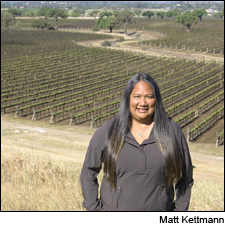From Santa Barbara to British Columbia, Native American vineyards are a growing business
By Matt Kettmann
Fast forward to today, and the Chumash are once again prospering, thanks to a successful casino and resort they built on their Santa Ynez Valley reservation in 2004. Six years later, with hopes of expanding their reservation, the 154-member tribe bought a nearby 1,400-acre property for a reported $40 million from the late actor-turned-vintner Fess Parker. The land came with 256 acres of vines, the Camp Four Vineyard, planted with 19 different grape varieties. While honoring existing contracts for the fruit (one-third of it goes to the Parker family's brands, while most of the rest is sold to about 70 small producers from all around the state), the Chumash started making their own wine, and released their first vintages of Kitá Wines last month.
In Arizona, members of the Yavapai-Apache Nation started Fire Mountain Wines in 2010 and, in California’s Sonoma County, two tribes of Pomo heritage both purchased vineyards in 2012: the 270-member Lytton Band, which own the San Pablo Casino in the Bay Area, spent $13.3 million to buy a 110-acre vineyard of Cabernet, Merlot and Chardonnay on 269 acres of land from Jordan Winery in the Alexander Valley, while the 1,000-member Dry Creek Band spent $24 million on 310 acres of land surrounding their River Rock Casino in Geyserville, including 130 acres of Chardonnay, Sauvignon Blanc, Gewürztraminer and Cabernet Sauvignon vines near the Russian River.
More inland, about an hour northwest of Sacramento in the Capay Valley, the Yocha Dehe Wintun Nation also got into vineyards as a way to diversify their business beyond their Cache Creek Casino. In 2012, the tribe became the first in California to release their wines, including a Viognier, Syrah rosé and two red blends under the Seka Hills label.
Below: "Winemaker Tara Gomez stands above the Camp Four Vineyard." (Matt Kellerman)


No comments:
Post a Comment